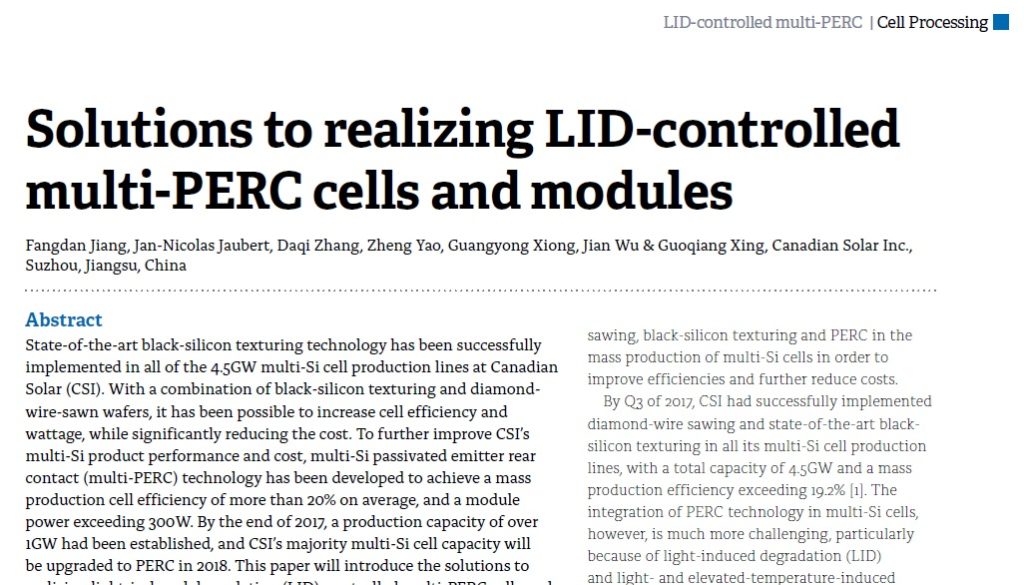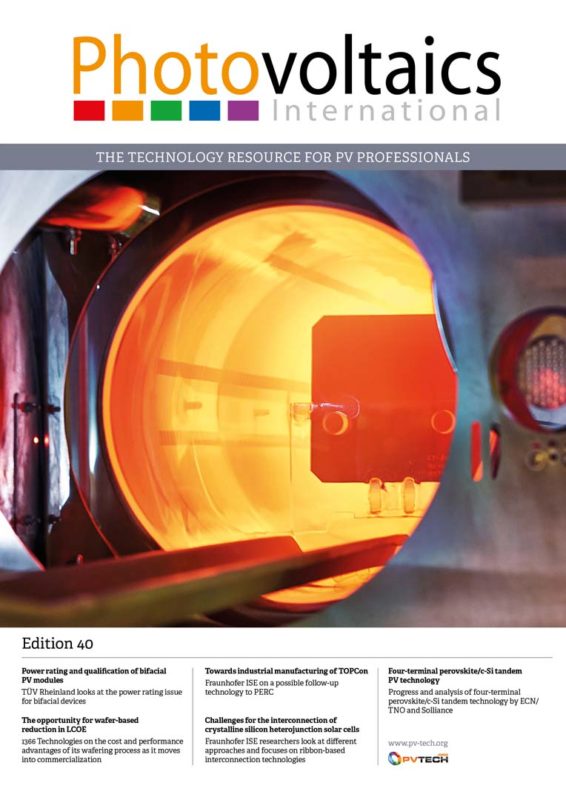By Fangdan Jiang; Jan-Nicolas Jaubert; Daqi Zhang; Zheng Yao; Guangyong Xiong; Jian Wu; Guoqiang Xing, Canadian Solar Inc., Suzhou, Jiangsu, China
State-of-the-art black-silicon texturing technology has been successfully implemented in all of the 4.5GW multi-Si cell production lines at Canadian Solar (CSI). With a combination of black-silicon texturing and diamondwire-sawn wafers, it has been possible to increase cell efficiency and wattage, while significantly reducing the cost. To further improve CSI’s multi-Si product performance and cost, multi-Si passivated emitter rear contact (multi-PERC) technology has been developed to achieve a mass production cell efficiency of more than 20% on average, and a module power exceeding 300W. By the end of 2017, a production capacity of over 1GW had been established, and CSI’s majority multi-Si cell capacity will be upgraded to PERC in 2018. This paper will introduce the solutions to realizing light-induced degradation (LID)-controlled multi-PERC cells and modules, as well as offering a discussion of the degradation performance. In addition, the technology evolution of CSI’s high-efficiency multi-Si products and a roadmap for 22%-efficiency multi-Si cells are presented.



